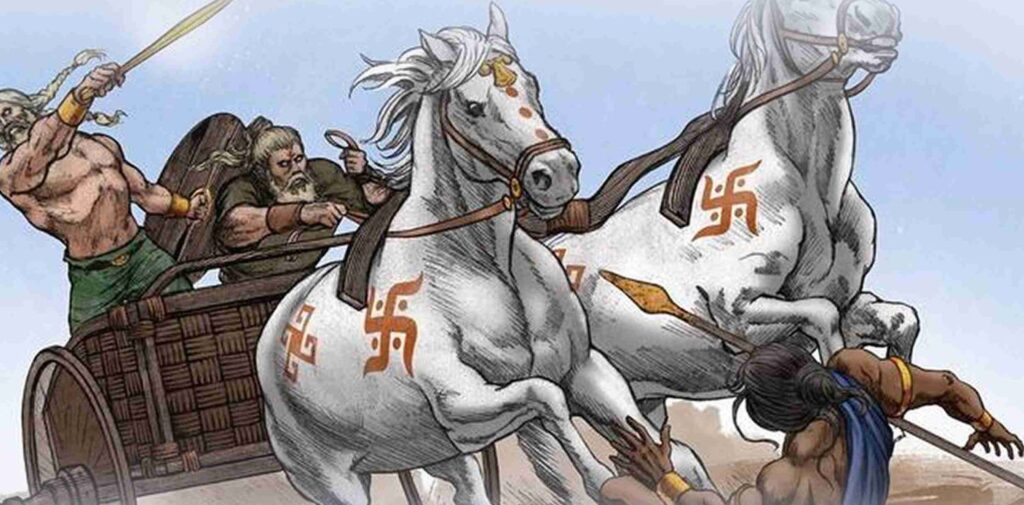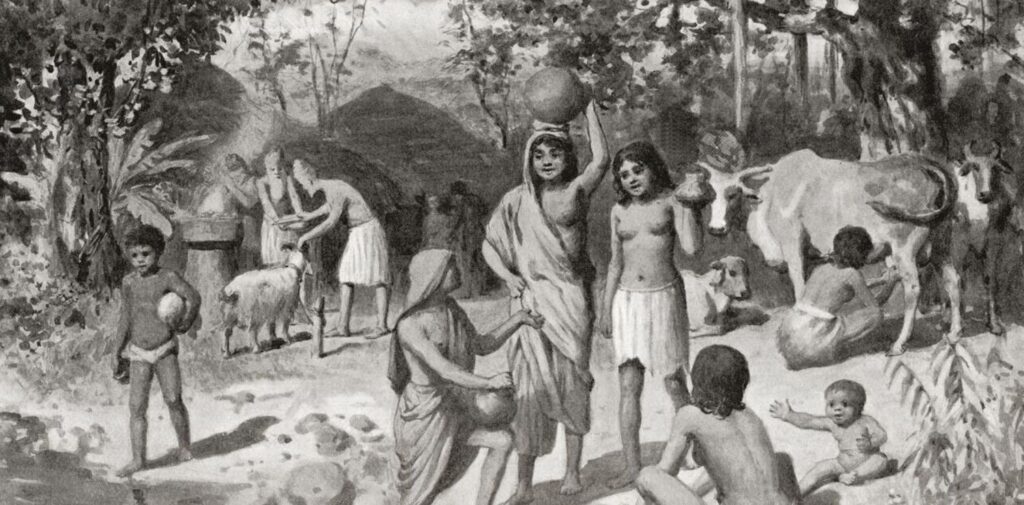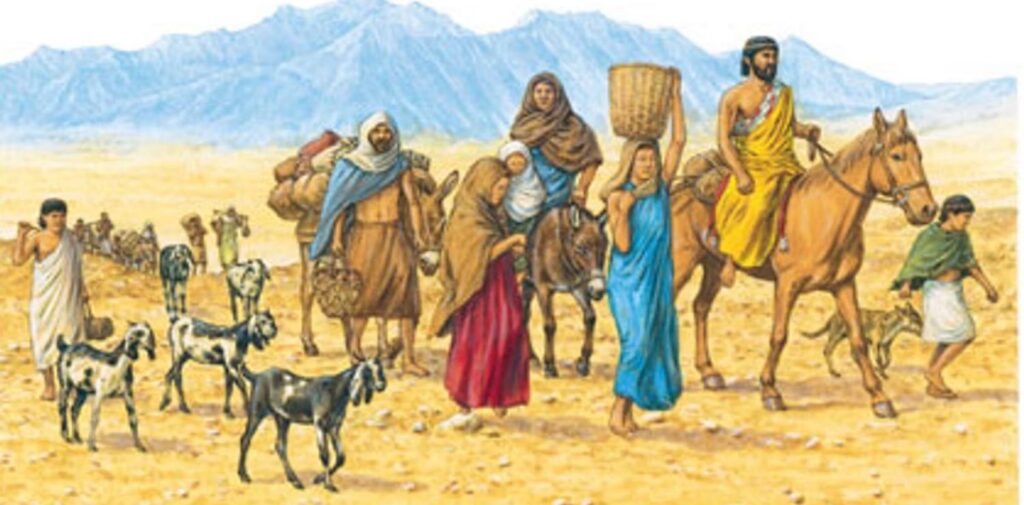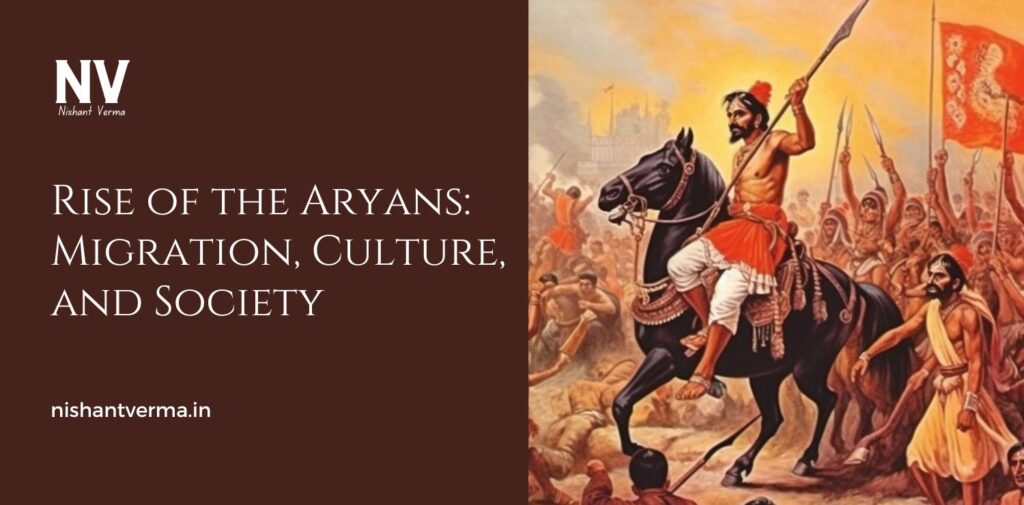The history of India is full of exciting stories about different peoples, cultures, and civilizations that have shaped the country over thousands of years. One of the most important groups in ancient Indian history was the Aryans. They are often mentioned in old texts and have a special place in the story of India’s growth. But who were the Aryans, and how did they influence the country?
In this article, we will take a simple journey into the past and explore the migration, culture, and society of the Aryans, and how they became a significant part of Indian history.
Who Were the Aryans?
The Aryans were a group of people who lived in Central Asia thousands of years ago. They were known for their language, culture, and way of life. It is believed that they first lived in the region around the Caspian Sea in Central Asia, and slowly, they began migrating to different parts of the world, including India.
Around 1500 BCE, the Aryans started migrating into the Indian subcontinent. Their arrival changed the course of Indian history, as they brought with them new ideas, practices, and a way of life that would influence the country for generations to come.

The Aryan Migration: How They Came to India
The Aryans are thought to have travelled from Central Asia through Persia (modern-day Iran) and into the northwestern regions of India. The exact reasons why they migrated are not fully known, but it is believed that they were looking for better land for farming, grazing animals, and new places to settle. They might have also been searching for new opportunities as their old lands became crowded or less fertile.
The Aryans entered India through the Khyber Pass, a narrow gap in the mountains between Afghanistan and Pakistan. This was the easiest route for people to travel from the north into India. Once they entered the Indian subcontinent, they settled mostly in the northwestern areas, such as the Punjab region (in present-day Pakistan and India).
The Aryan Language: Sanskrit
One of the most important things the Aryans brought with them was the Sanskrit language. Sanskrit is an ancient language that is still used in India today in religious texts and ceremonies. It is the language in which many of India’s oldest texts, such as the Vedas, were written.
The Aryans’ language helped shape much of the modern Indian languages that we speak today. Many languages in India, such as Hindi, Bengali, and Gujarati, have roots in Sanskrit. The Aryans’ ability to create a common language was one of the ways they were able to spread their ideas and culture across the region.
Aryan Culture: Beliefs and Traditions
The Aryans brought many important cultural practices with them to India, which are still a big part of Indian life today. Their culture was deeply tied to their religion, and they believed in many gods and goddesses. They worshipped nature, animals, and forces of nature like the sun, water, and fire. Their gods were very important to them, and they offered sacrifices and prayers to please them.
The Vedas are the oldest and most sacred texts in India, and they were written by the Aryans. They are collections of hymns, prayers, and stories that are dedicated to the gods. These texts became the foundation of Hinduism, which is one of the world’s oldest religions.
The Aryans also believed in rituals and sacrifices as a way to connect with the gods and ask for their blessings. Many of these rituals were performed by priests, who were an important part of Aryan society.

Aryan Society: How They Lived
The Aryans organized their society in a way that helped them live peacefully and work together. They divided people into groups or classes, which was the beginning of the caste system in India. The caste system divided people based on their jobs and duties in society.
At the top of the Aryan society were the priests or Brahmins, who were in charge of religious rituals and sacrifices. Then came the warriors or Kshatriyas, who protected the society and helped govern the people. After them were the traders or Vaishyas, who were responsible for farming, trading, and other economic activities. Finally, there were the Shudras, the workers who performed various tasks to help society function smoothly.
This system helped Aryan society run in an organized way, though over time, it became more rigid and harder for people to move between the different groups.
Aryan Villages and Settlements
The Aryans built their homes and villages in places that were close to rivers, especially the Indus River, because water was important for farming. The Aryans were skilled farmers and grew crops like wheat, barley, and rice. They also raised animals such as cows, horses, and sheep.
Their villages were usually made of simple houses made of wood, straw, or mud. The Aryans also developed advanced farming tools, including ploughs, which helped them grow more food. As they settled in different parts of India, they built towns and cities that became centres of trade and culture.
The Aryans and the Rigveda: The First Sacred Texts
One of the most important gifts that the Aryans gave to India was the Rigveda, a collection of hymns written in Sanskrit. These hymns were dedicated to the gods and were chanted during religious ceremonies and rituals. The Rigveda also talks about the daily life of the Aryans, their gods, their beliefs, and their values.
The Rigveda is not just a religious book; it is also an important historical document that gives us a glimpse of what life was like during the time of the Aryans. It talks about the social structure, the importance of the family, and the roles of men and women in Aryan society.
The Impact of Rise of the Aryans on India
The arrival of the Aryans in India had a huge impact on the country’s development. They brought with them new ideas, technologies, and beliefs that transformed Indian society in many ways. The Aryans helped shape the culture, religion, and social structure of India, and their legacy can still be seen in the country today.
- Religion: The Aryans introduced the worship of many gods, which later became a key part of Hinduism.
- Language: The Sanskrit language, developed by the Aryans, is still important today and has influenced many languages in India.
- Social Structure: The caste system that the Aryans created became an important part of Indian society for centuries.
- Writing: The Vedas, written in Sanskrit, became the foundation for Indian literature and religious texts.

The End of the Aryan Migration
The Rise of the Aryans’ migration to India did not happen overnight. It took hundreds of years for them to spread out and settle in different parts of the subcontinent. Over time, their culture mixed with that of the local people, and new kingdoms, empires, and traditions began to form. The Aryans’ influence continued to shape India for centuries, and their stories and teachings still inspire people today.
Conclusion: The Aryans and Their Lasting Legacy
Rise of the Aryans marked the beginning of an important chapter in India’s history. They brought with them a rich culture, language, and religious practices that would shape the future of the Indian subcontinent. Their stories, beliefs, and achievements still echo in modern India, and they continue to inspire people around the world.
By studying the Rise of the Aryans, we not only learn about their past but also understand how their ideas have influenced the world today. Their legacy of wisdom, culture, and religion continues to guide and inspire people in India and beyond.




